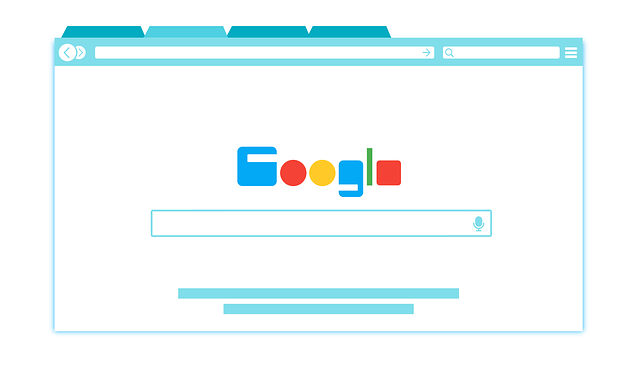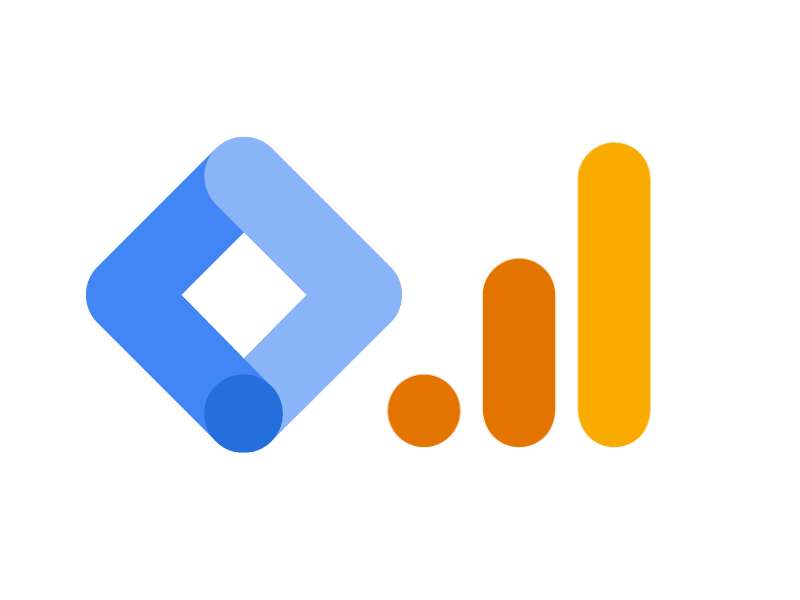Google PPC, or Pay-Per-Click, is an advertising model used on Google’s platforms. Businesses pay a fee each time one of their ads is clicked.
Google PPC is essential for businesses seeking immediate exposure in Google’s search results. Through clever use of Google Ads, companies harness the capability to appear before potential customers actively searching for related products or services. A well-structured PPC campaign offers customizability that ranges from targeting specific geographic locations to selecting particular times for ads to appear.
Advertisers bid on keywords relevant to their target market, and if successful, their ads feature prominently at the top or bottom of Google’s search results. This digital marketing strategy can massively influence website traffic, conversions, and ultimately sales, providing measurable return on investment (ROI) for businesses across various industries. Implementing a PPC strategy requires understanding the dynamics of ad auctions, crafting compelling ad copy, and continuous optimization to ensure the best performance of your ads.
Sculpting The Perfect Google PPC Campaign
Welcome to the art of sculpting the perfect Google PPC campaign. Picture this process as a meticulous crafting session where every detail matters and precision is key. To ensure success, one needs to delve into the fine details of keyword selection and ad copy creation. Let’s dive into this creative endeavor to elevate your Google PPC campaign to a masterpiece.
Selecting The Right Keywords
Keywords are the building blocks of your PPC campaign. These are the clues that tell Google what your ad is about. Picking the right keywords can mean the difference between an ad that reaches your target audience and one that gets lost in the sea of online content.
- Start with brainstorming. Think about words your customers might use.
- Use keyword tools. Google’s Keyword Planner can suggest ideas.
- Analyze the competition. Check what keywords others are bidding on.
- Pick specific over general. “Wooden spatula” beats “kitchen tools”.
- Consider search intent. What is the searcher looking to do?
- Balance volume and competition. High volume and low competition are best.
Crafting Compelling Ad Copy
Your ad copy is the voice of your PPC campaign. It talks to potential customers. A great ad copy can inspire clicks, while a weak one can be ignored. The goal is to create copy that is both informative and enticing.
- Make it relevant. Your ad should match your keywords closely.
- Include benefits. Tell the searcher what’s in it for them.
- Be clear and concise. Short sentences pack a punch.
- Have a call to action. Use phrases like “Buy now” or “Learn more”.
- Highlight what’s unique. Show why you’re different from the rest.
- Proofread. Spelling errors can hurt credibility.

Credit: www.shopify.com
Leveraging Ad Extensions
Google PPC ad extensions are a powerhouse feature. They give your ads more room to shine. They provide additional info to your audience. This leads to better click-through rates. Users get to know your business better. Here, we’ll explore how site links and callout extensions can boost your campaigns.
Utilizing Sitelink Extensions
Sitelink extensions add more links to your ads. These take users to specific pages on your website. This might be your contact page, a special offer, or a product. Users love quick access to what they need.
- Direct navigation: Lead users straight to what they’re searching for.
- More choices: Offer different options, maximizing potential for engagement.
- Better organization: Group-related products or services for easy discovery.
Use site link extensions to guide users. Think about the most important pages. Then, add them to your PPC campaign. Track their performance. Adjust as needed for better results.
Incorporating Callout Extensions
Callout extensions highlight what’s great about your offer. These are short phrases that stand out. They tell users why they should choose you.
- Unique selling points: Share features or offers that set you apart.
- Special promotions: Alert users to discounts or limited-time offers.
- Free shipping: Mention any perks that may entice a click-through.
Include 3–5 callouts in your ads to make them more appealing. Choose words that resonate with your audience. Make each callout count. This will make your ad more engaging.
Optimizing Landing Pages
Every click on your Google PPC ad is a potential customer. Optimizing your landing pages ensures that potential does not go to waste. A well-optimized landing page boosts conversions and enhances the effectiveness of your pay-per-click campaigns.
Ensuring Message Match
Message match is a sign of consistency. It confirms that your ad’s promise is fulfilled on the landing page.
- Align headlines with the ad copy to reduce the bounce rate.
- Use similar images and colors for a coherent visual flow.
- Reiterate the benefits mentioned in the ad to bolster credibility.
Improving Load Times
Fast landing pages mean happy visitors. Optimizing load times is crucial for retaining traffic.
- Compress images to reduce size without losing quality.
- Minimize HTTP requests by combining files and using CSS sprites.
- Implement caching to hasten repeat visits.
Check load times with tools like Google PageSpeed Insights.
Improving Load Times And Mobile Responsiveness
Mobile responsiveness adapts your page to any device. The goal is a seamless experience on phones and tablets.
| Task | Impact |
|---|---|
| Use a responsive design theme | Ensures usability on all screens |
| Optimize touch elements | Improves interaction for touch users |
| Test on various devices | Guarantees a uniform experience |
Leverage tools like Google’s Mobile-Friendly Test for insights on mobile optimization.
Strategic Bidding Techniques
Strategic bidding techniques can make or break your Google PPC campaigns. Master the art of bidding to ensure your ads reach the right people at the right cost. Effective bid management maximizes your return on investment, and with these key strategies, you’ll be placing smarter, more competitive bids in no time.
Implementing Cost-per-click Bids
Cost-per-click (CPC) bidding puts you in control of your ad spend. Determine the maximum amount you’re willing to pay for a click and stay within budget. Below, find best practices that can help:
- Analyze performance data: Adjust bids based on which ads drive the most valuable traffic.
- Start with a baseline: Begin with Google’s suggested bid, then tailor as you gather more data.
- Consider ad position: Aim for the sweet spot in ad placement to balance visibility and cost.
Exploring Automated Bid Strategies
Automated bid strategies take the guesswork out of setting bids. They allow Google’s algorithms to optimize bids based on your goals. Examine different automated strategies:
| Strategy | Benefit |
|---|---|
| Target CPA | Focuses on converting users at a specific acquisition cost. |
| Maximize Conversions | Goes all-in to get you the most conversions for your budget. |
| Enhanced CPC | Adjusts manual bids to help you get more conversions. |
Test different automated strategies to see what works best. Monitor closely as machine learning takes time to adjust. Set performance targets to guide the AI in optimization.
Analyzing PPC Metrics For Growth
Understanding PPC metrics is crucial for growth. It can look like solving a puzzle. The pieces fit together to paint a clear picture of campaign performance. Keeping an eye on key metrics lets businesses spot trends, refine strategies, and drive success. Get ready to dive into the world of PPC analytics for business growth.
Measuring Click-through Rates
Click-through rate (CTR) is the number of clicks on an ad divided by the number of times it’s shown. This metric helps gauge ad relevance and appeal. A higher CTR means your ads are striking the right chord with your audience. Let’s put it under the microscope.
- Understand the industry average CTR
- Analyze CTR against campaign goals
- Make adjustments to boost CTR if needed
Keep these steps in mind, and a strong CTR could lead to better ad positions and lower costs. Remember, compelling ad copy and relevant keywords are strong drivers of CTR success.
Evaluating Conversion Rates
Next, we focus on conversion rates. A conversion can be a purchase, a sign-up, or a download. It’s the action that matters most to your business. A high conversion rate tells you that your ad is not just attractive, but also effective at persuading customers to take action.
| Action | Significance |
|---|---|
| Tracking conversion pixels | Ensures every action is recorded |
| Tests for landing page optimization | Improves user experience for conversions |
| Comparing conversion rates over time | Shows trends and patterns |
By tracking conversions, you get a clear idea of the return on investment (ROI) from your PPC efforts. Keep in mind, a strong call-to-action (CTA) can make a world of difference in encouraging that click to become a conversion.
Advanced Targeting Tactics
Advanced Targeting Tactics in Google PPC campaigns allow advertisers to pinpoint their audience with incredible precision. By leveraging specific features within Google Ads, businesses can connect with potential customers more effectively than ever before. Two particularly powerful strategies include utilizing remarketing lists and implementing geo-targeting for localized campaigns.
Utilizing Remarketing Lists
Remarketing lists are a goldmine for engaging with interested users. These lists track visitors to your website and enable you to show targeted ads to users who have already expressed interest in your products or services. Applying these tactics results in better conversion rates and a higher ROI.
- Segment viewers based on their behavior on your site.
- Create personalized ads that resonate with their past interests.
- Adjust bids for users more likely to convert.
Geo-targeting For Localized Campaigns
Geo-targeting hones in on customers based on their location. Businesses can customize their outreach on a granular level, from countries down to zip codes. This form of targeting ensures that local customers see your ads, increasing relevancy and the chance of in-person visits.
| Geo-Targeting Level | Benefits |
|---|---|
| Country | Brand expansion in new markets |
| State/Region | Focus on regional preferences |
| City or Zip Code | Ads tailored to local customers |
Adjust campaigns based on local events or seasons. Use location extensions to connect online ads with physical store locations. Optimizing for local searches drives foot traffic and enhances online engagement.
Adapting To Algorithm Changes
In the ever-evolving landscape of digital advertising, mastering Google PPC requires a dynamic approach. Algorithm changes can shift the terrain overnight, demanding swift adaptation. Staying current and modifying strategies is not optional; it’s vital. This approach ensures campaigns continue to thrive despite the changing algorithms of Google Ads.
Staying Updated With Google’s Updates
Being informed on the latest algorithm changes is a cornerstone of PPC success. Google frequently rolls out updates that can affect ad performance. Subscribers to Google’s official blog and industry newsletters gain early insights into these changes. This knowledge empowers advertisers to anticipate and react promptly.
- Subscribe to Google Ads Blog
- Follow leading PPC experts on social media
- Join PPC forums and communities
Adjusting Strategies Proactively
Once informed, proactive strategy adjustments maintain campaign efficiency. Analyzing data trends helps pinpoint necessary changes early on. This may involve shifting budgets or tweaking keywords. Advertisers should test new approaches and scale successful tactics.
Key strategy adjustments include:
- Reviewing keyword performance regularly
- Testing new ad copy
- Experimenting with different bidding strategies

Credit: www.searchoptics.com
FAQ On Google PPC
What Is Google PPC?
Google PPC, or Pay-Per-Click, is an advertising model where advertisers pay a fee each time their ad is clicked on Google’s platform. It primarily includes ads in search results and on websites in the Google Display Network.
Is Google PPC Worth It?
Google PPC can be valuable, offering quick, measurable results, targeted traffic, and high ROI for businesses with strategic campaigns and careful management.
How Do I Run PPC On Google?
Create a Google Ads account, set up your campaign by choosing your objective, and define your target audience. Select keywords, set your budget, craft compelling ad copy, and launch your PPC campaign. Monitor performance and adjust as needed for better results.
What Is Google PPC Vs SEM?
Google PPC (Pay-Per-Click) is a model where advertisers pay per ad click. SEM (Search Engine Marketing) encompasses PPC and other marketing strategies for improving search visibility.
Conclusion
To sum up, mastering Google PPC is key to digital marketing success. By leveraging precise targeting and ongoing campaign optimization, businesses can see significant ROI improvements. Start experimenting with your strategies today and watch your online presence grow. With dedication and smart tactics, the world of PPC can be your oyster.




